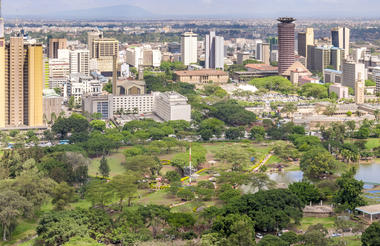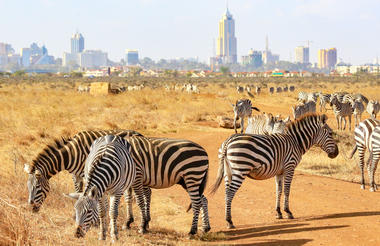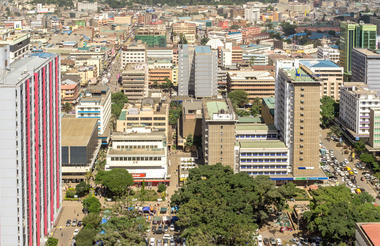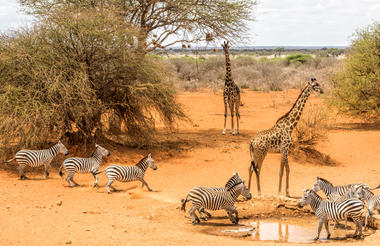Resting in the magnificent Great Rift Valley and presided over by the majestic Mount Kilimanjaro, Kenya is characterised by hauntingly beautiful natural landscapes of forested hills, patchwork farms, wooded savanna and vast forests brimming with an extraordinary abundance of wildlife. The nation’s diverse range of traditional African cultures is influenced by over 70 unique ethnic groups from the Maasai, Samburu, Kikuyu, and Turkana tribes to the Arabs and Indians that settled on the coast. Add to this: an exquisite tropical coastline fringed with breathtaking golden sand beaches; gorgeous coral gardens providing excellent snorkeling and diving opportunities; and a slew of lively beach resorts, and it is easy to see why so many visitors flock here from around the world to experience a truly unique African adventure in one of the world’s most pristine safari destinations.
Situated along the Nairobi River in beautiful Kenya, the capital of Nairobi is East Africa's most cosmopolitan city. It serves as an excellent starting point for African safari trips around Kenya. Nairobi is Africa’s 4th largest city and is a vibrant and exciting place to be. There are some fascinating attractions: its cafe culture, unbridled nightlife, the National Museum, the Karen Blixen Museum and most notably, just 20 minutes from the city centre, wild lions and buffalo roam in the world’s only urban game reserve. Make sure you pay a visit to the elephant orphanage operated by the David Sheldrick Wildlife Trust for a once in a lifetime experience.



Located in the southern reaches of Kenya, the Amboseli National Park is renowned for its excellent variety of wildlife such as Maasai giraffe, elephant, lion and cheetah and not surprisingly it is one of Kenya's most popular parks. The landscape of Amboseli is dominated by the majestic snowcap of Mount Kilimanjaro, as well as open plains, acacia woodland, swamps and the massif of Ol Doinyo Orok. The birding is excellent, especially closer to the lakes and swamps. The park is famous for being the best place in Africa to get close to large herds of elephants among other wildlife species. Other attractions include opportunities to meet the Maasai people and soak up spectacular views of Mount Kilimanjaro, the highest free-standing mountain in the world.

Set in Northern Laikipia in Kenya, East Africa, Loisaba Conservancy stretches over 20 000 hectares of magnificent African landscape. The terrain is traversed by two permanent rivers and abundant springs which make it a perfect habitat to sustain a myriad of wildlife. It is known as a world-class ecotourism destination offering a variety of unique opportunities for visitors looking to immerse themselves in nature. Spot majestic elephants journeying along the elephant migration corridor, stay overnight in a tented camp under the stars, soak up the incredible views and enjoy a thrilling game safari. Other popular activities include camel-trekking, mountain biking, horse-riding, fishing, guided bush walks, and cultural visits to Samburu villages.



The Masai Mara rcosystem includes the Masai Mara National Reserve and the adjacent and excellent Mara private conservancies (Mara North, Naboisho, Olare-Motorogi, Olderkesi being the prime ones). One of the highlights of the Masai Mara National Reserve is the annual wildebeest migration crossing rivers between the Serengeti and the Masai Mara. It is the largest mass movement of land mammals on the planet – with more than a million animals following the rains. But the Mara River crossing poiunts can be very crowded between July and October, when this happens. The selection of camp is very important to avoid being with many dozens of other vehicles. During this time, it is better to stay in a concession, with limnited tourist and vehicle numbers, to enjoy the abundant wildife in these superbly run private conservancies, and have a day trip to the Mara River if one really wants to try and see a river crossing. There are also a few conservancies located close to the Sand River, which give a much more exclusive and intimate experience, should the wildebeest and zebra chose to cross when you are there.








